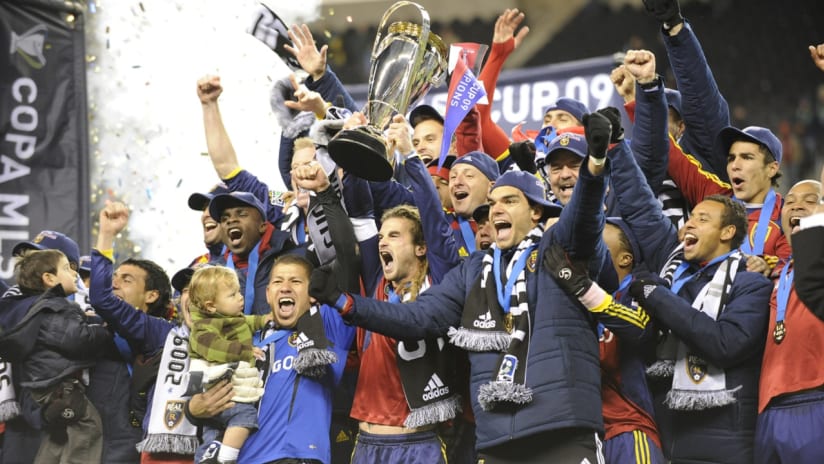November 22 is a date that is remembered prominently in Real Salt Lake’s history.
It was on that date in 2009 that Robbie Russell converted the winning penalty kick to give the state of Utah its first professional sports title as RSL lifted MLS Cup with a shootout victory over the LA Galaxy.
Much has changed at Rio Tinto Stadium since then and with the growth and evolution of the league, more changes are still to come. As more time passes and that historic match at CenturyLink Field in Seattle (then called Qwest Field) drifts further into the memory banks, RSL General Manager Craig Waibel is tasked with a much more difficult challenge than existed in the league as it stood seven years ago.
That starts with the size of the league. Whereas 15 teams competed for the league title in 2009, there are now 20 teams in the league, with two more entering in 2017 with Minnesota and Atlanta joining the fray.
The stakes have also grown, with teams now allowed to sign up to three Designated Players, as opposed to one in 2009, as well as other mechanisms – Allocation Money and Targeted Allocation Money – designed to bring in higher-priced players. Add in the increased role of youth development and the implementation of USL clubs to further develop young players between the Academy and MLS levels and the job of a general manager goes far beyond managing the 26 players on the first-team roster.
So too has the expectations of players increased and Waibel addressed that at his season-ending press conference on November 3 when he was asked about getting younger.
“We need to cultivate an environment where working in the weight room and working away from the field is just as important as on the field,” Waibel said. “We need to get away from the idea of what this club once was, in terms of showing up for practice and leaving … it’s a different league. It’s a different league. We have international players that are used to training twice a day. They’re used to lifting weights three times a week. They’re used to an intense environment. We need to grow. We need to be willing and have the courage as an organization and as a group to challenge our players more physically and mentally and put them in front of video more often.”
While the league has changed, there are still principles that surrounded the 2009 team that can be implemented today.
The starting 11 in the MLS Cup Final against LA had an average age of 27.2 years old with just one player over the age of 30. By comparison, this year’s most frequently used RSL squad had an average of 29.6 with five players over the age of 30.
“I think from a roster perspective we need to continue to get younger. We need to get back to what made this club what it was. That is to get a good core of players that can be here for quite some time that still physically have some room to grow and within the game have a lot of talent and room to grow,” Waibel said. “We need to cultivate that and we need to, as we have been doing, recreate an identity, but one that people fear.”
So while Waibel can look at the picture of Real Salt Lake on the victory stand with MLS Cup lifted to the sky and see the target that motivates him each time he steps into his office. But he also sees the makeup of the players lifting and knows there is work to be done.





